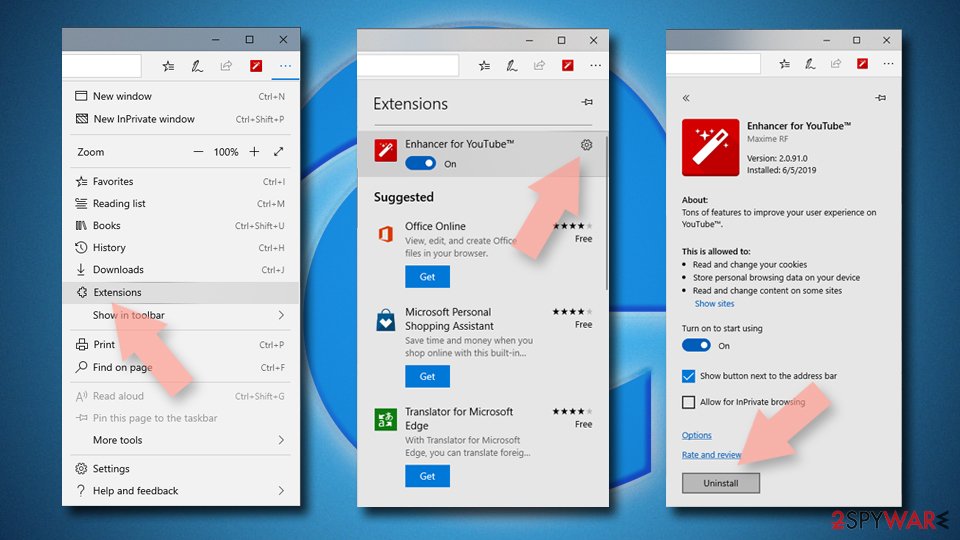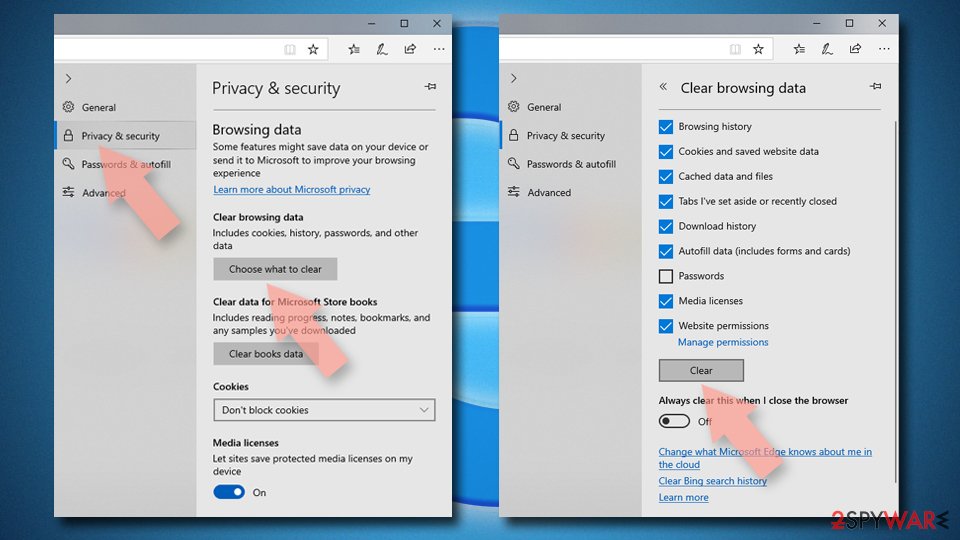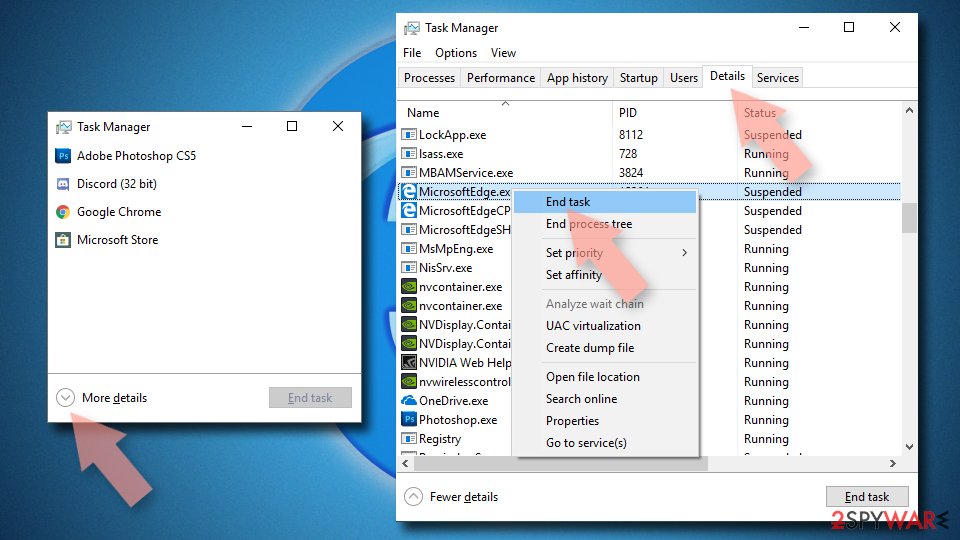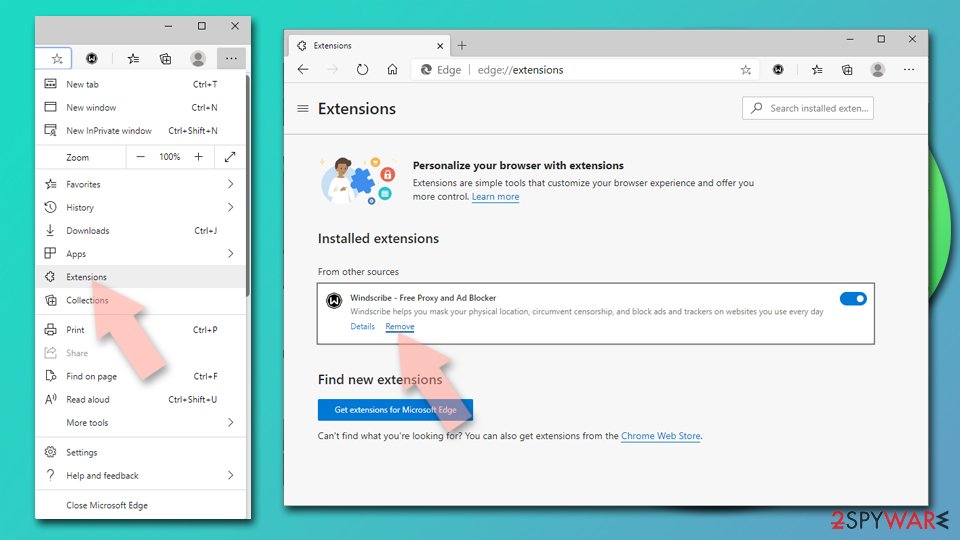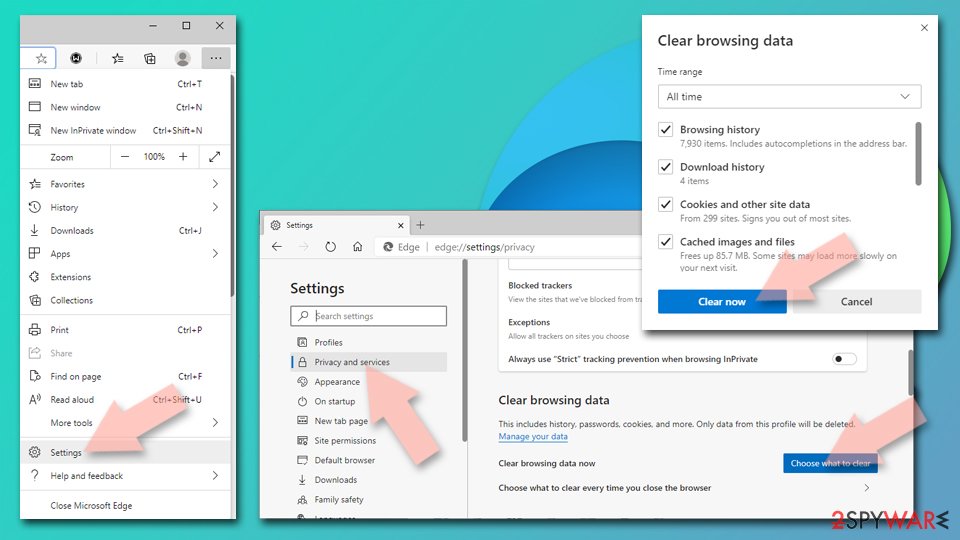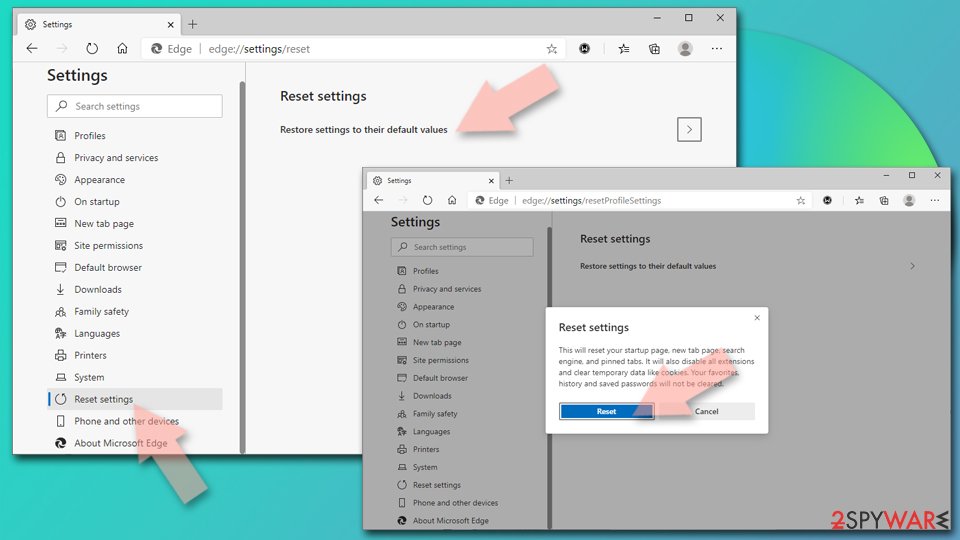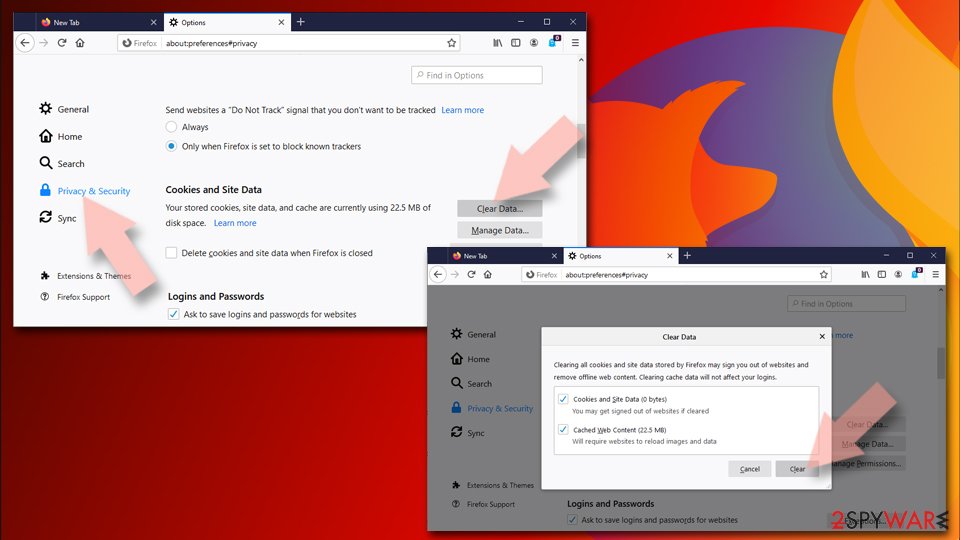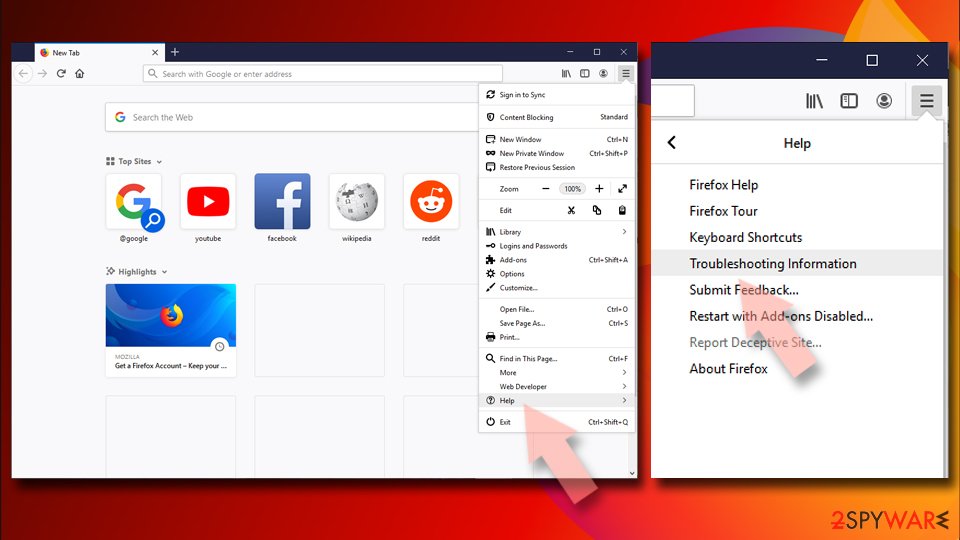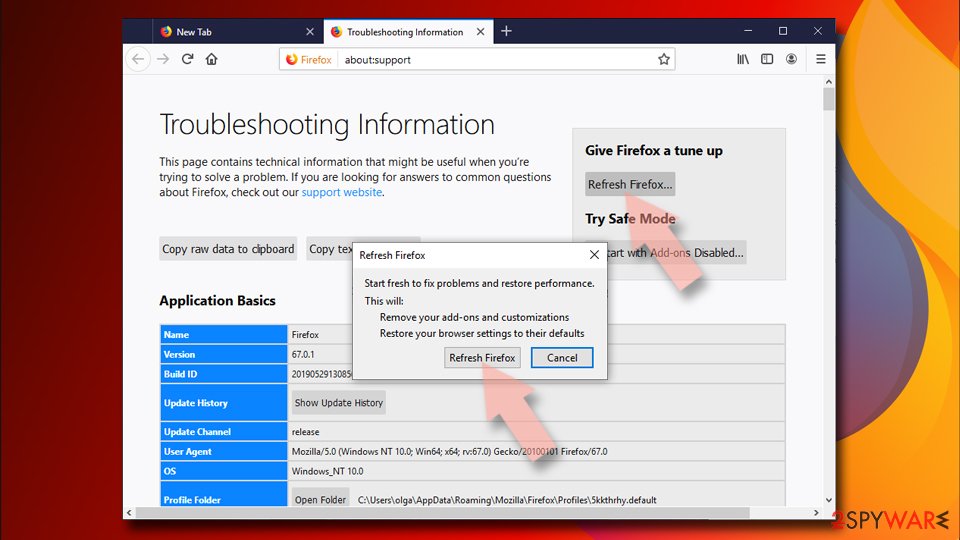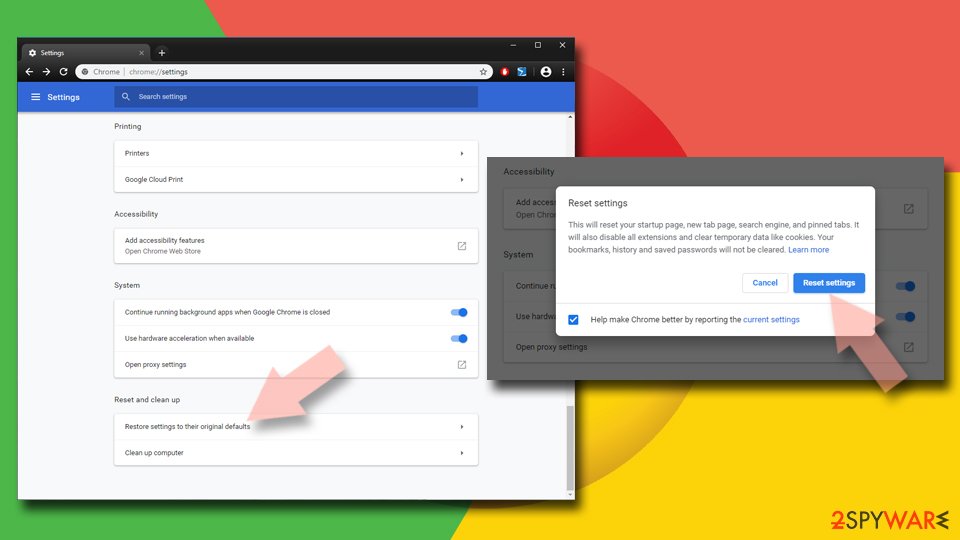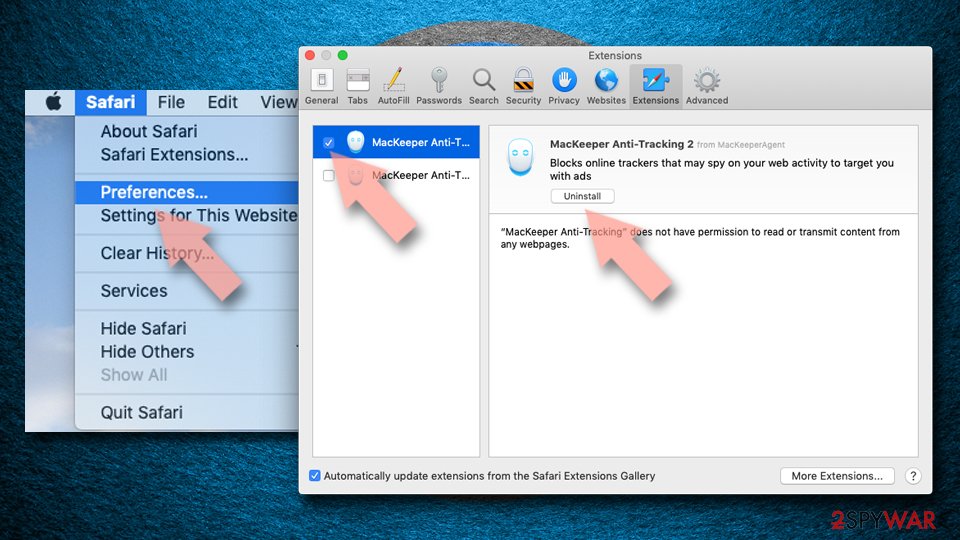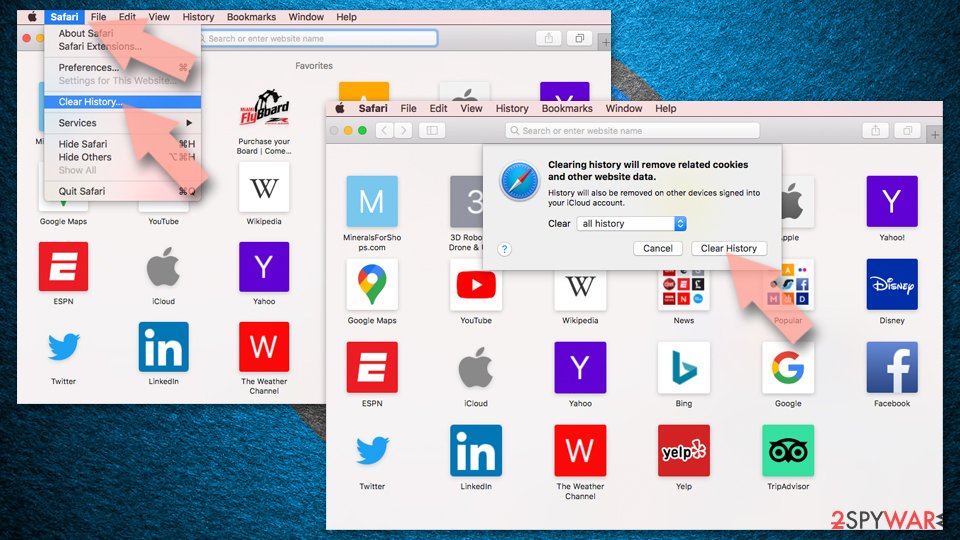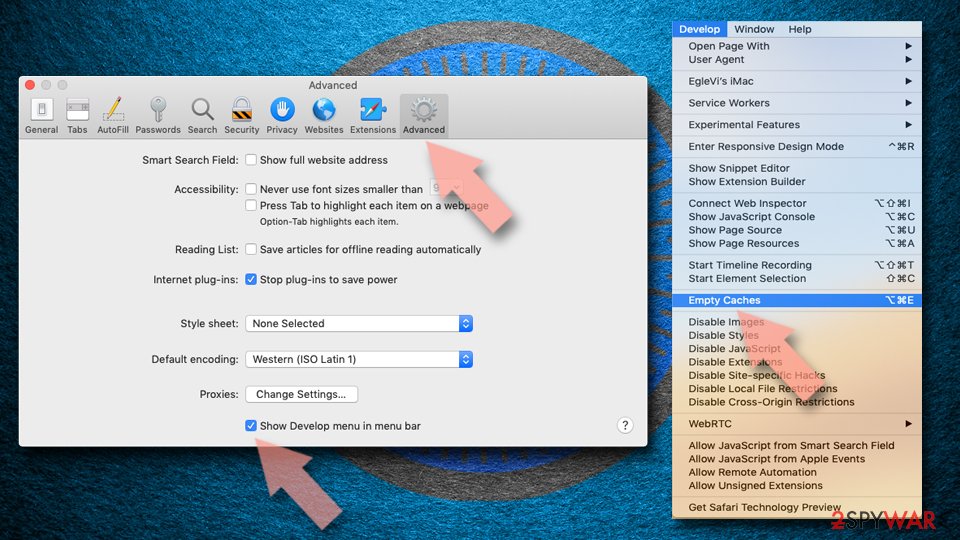Search.hgomapsandirections.com (Removal Guide) - Free Instructions
Search.hgomapsandirections.com Removal Guide
What is Search.hgomapsandirections.com?
Search.hgomapsandirections.com is a suspicious application that seeks to hijack Google Chrome and other browsers

Search.hgomapsandirections.com is a browser hijacker[1] that was developed by Polarity Technologies Ltd. and is presented as a legitimate and useful search engine. However, this statement could not be further from the truth, because developers of dubious apps try to monetize on innocent users by disturbing their browsing sessions on a daily basis.
| SUMMARY | |
| Name | Search.hgomapsandirections.com |
| Type | Browser hijacker |
| Extension | Go Maps and Directions |
| Developer | Polarity Technologies Ltd. |
| Symtoms | Hijacked homepage and search engine, intrusive advertisement, altered search results, etc. |
| Distribution | Software bundling |
| Main dangers | Personal data exposure, malware infections |
| Elimination | Use FortectIntego or check manual guide below |
The suspicious program comes in software bundle in the form of a browser extension called Go Maps and Directions. It attaches itself to Google Chrome, Internet Explorer, Safari, Opera, Mozilla Firefox or another browser and changes the homepage and search engine, as well as new tab address, to hxxp://search.hgomapsandirections.com.
Visually Search.hgomapsandirections.com hijack looks precisely like Search.hyourmapview.com, Search.hgomaps.co and many others. It tries to lure users by adding quick action buttons of useful websites, such as Bing maps, Google maps, Amazon, Geico, etc. It is evident that Polarity tries to attract users who travel and use online maps all the time.
However, this website should not be trusted. Even if the site might seem useful, do not fall for developers’ trick, as their only interest is monetary gain and they do not care about users (not enough to make sure users are protected from malware or identity theft,[2] at least) and their browsing experiences. Therefore, please do not postpone Search.hgomapsandirections.com removal, it might save you from severe consequences.
We agree that browser hijackers and adware are indeed not malicious programs. However, they do possess certain qualities that could be considered malicious. In fact, multiple security experts called these seemingly innocent applications “legal malware.” No wonder, as redirects might bring users to questionable domains, where malicious JavaScripts could download and install computer viruses.
What is more, users could also end up on phishing websites and enter their personally-identifiable information when prompted. It is true that user enters the data himself. However, if a browser hijacker like Go Maps and Directions would not be present, he would most likely not be redirected there in the first place.
Intrusive ads, malicious redirects, slow internet browsing, additionally installed extensions or toolbars are all the things you should avoid, and a browser hijacker delivers exactly these features. Therefore, you should remove Search.hgomapsandirections.com and not risk your computer safety anymore. If you want to eliminate the threat quickly, scan your system with FortectIntego.
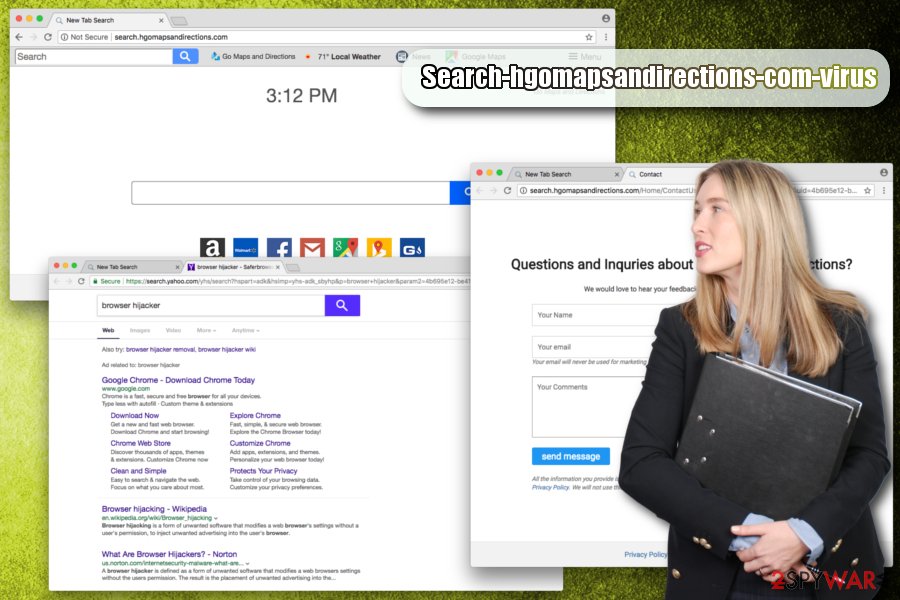
PUP developers trick users to install unwanted programs using software bundling
Security experts[3] note that users are still very likely to fall a victim of software bundling. This deceptive marketing approach has been contaminating users’ machines with trash applications since the early 90s. It is an unfair tactic, yet is considered to be legal, and many developers earn a lot of money using it.
When installing freeware or shareware, follow these tips:
- Never rush the installation procedure by clicking “Next” several times without looking;
- Carefully read through EULA and Privacy Policy. These documents can disclose a lot of valuable information about the product you are about to install;
- Always opt for Advanced/Custom installation mode instead of Recommended/Quick one;
- If you notice any optional installs in Advanced settings, eliminate all the tick marks next to them, before finalizing the installation;
Search.hgomapsandirections.com elimination procedure
If you want to use Google or Bing maps, merely create shortcuts on your Bookmarks bar. Do not rely on a suspicious app for such functions – it is not worth it.
You can remove Search.hgomapsandirections.com virus by downloading and installing security software. We recommend picking from the list below – these tools are specifically designed to detect and exterminate all the PUPs from your computer. Besides, it will protect your machines from potential infections in the future.
You can also use our illustrated step-by-step guide for Search.hgomapsandirections.com removal. However, make sure you understand what you are doing, as an incorrect application of the manual might result in an uninstallation failure.
You may remove virus damage with a help of FortectIntego. SpyHunter 5Combo Cleaner and Malwarebytes are recommended to detect potentially unwanted programs and viruses with all their files and registry entries that are related to them.
Getting rid of Search.hgomapsandirections.com. Follow these steps
Uninstall from Windows
To delete the suspicious app from Windows, follow these steps:
Instructions for Windows 10/8 machines:
- Enter Control Panel into Windows search box and hit Enter or click on the search result.
- Under Programs, select Uninstall a program.

- From the list, find the entry of the suspicious program.
- Right-click on the application and select Uninstall.
- If User Account Control shows up, click Yes.
- Wait till uninstallation process is complete and click OK.

If you are Windows 7/XP user, proceed with the following instructions:
- Click on Windows Start > Control Panel located on the right pane (if you are Windows XP user, click on Add/Remove Programs).
- In Control Panel, select Programs > Uninstall a program.

- Pick the unwanted application by clicking on it once.
- At the top, click Uninstall/Change.
- In the confirmation prompt, pick Yes.
- Click OK once the removal process is finished.
Delete from macOS
Remove items from Applications folder:
- From the menu bar, select Go > Applications.
- In the Applications folder, look for all related entries.
- Click on the app and drag it to Trash (or right-click and pick Move to Trash)

To fully remove an unwanted app, you need to access Application Support, LaunchAgents, and LaunchDaemons folders and delete relevant files:
- Select Go > Go to Folder.
- Enter /Library/Application Support and click Go or press Enter.
- In the Application Support folder, look for any dubious entries and then delete them.
- Now enter /Library/LaunchAgents and /Library/LaunchDaemons folders the same way and terminate all the related .plist files.

Remove from Microsoft Edge
Delete unwanted extensions from MS Edge:
- Select Menu (three horizontal dots at the top-right of the browser window) and pick Extensions.
- From the list, pick the extension and click on the Gear icon.
- Click on Uninstall at the bottom.

Clear cookies and other browser data:
- Click on the Menu (three horizontal dots at the top-right of the browser window) and select Privacy & security.
- Under Clear browsing data, pick Choose what to clear.
- Select everything (apart from passwords, although you might want to include Media licenses as well, if applicable) and click on Clear.

Restore new tab and homepage settings:
- Click the menu icon and choose Settings.
- Then find On startup section.
- Click Disable if you found any suspicious domain.
Reset MS Edge if the above steps did not work:
- Press on Ctrl + Shift + Esc to open Task Manager.
- Click on More details arrow at the bottom of the window.
- Select Details tab.
- Now scroll down and locate every entry with Microsoft Edge name in it. Right-click on each of them and select End Task to stop MS Edge from running.

If this solution failed to help you, you need to use an advanced Edge reset method. Note that you need to backup your data before proceeding.
- Find the following folder on your computer: C:\\Users\\%username%\\AppData\\Local\\Packages\\Microsoft.MicrosoftEdge_8wekyb3d8bbwe.
- Press Ctrl + A on your keyboard to select all folders.
- Right-click on them and pick Delete

- Now right-click on the Start button and pick Windows PowerShell (Admin).
- When the new window opens, copy and paste the following command, and then press Enter:
Get-AppXPackage -AllUsers -Name Microsoft.MicrosoftEdge | Foreach {Add-AppxPackage -DisableDevelopmentMode -Register “$($_.InstallLocation)\\AppXManifest.xml” -Verbose

Instructions for Chromium-based Edge
Delete extensions from MS Edge (Chromium):
- Open Edge and click select Settings > Extensions.
- Delete unwanted extensions by clicking Remove.

Clear cache and site data:
- Click on Menu and go to Settings.
- Select Privacy, search and services.
- Under Clear browsing data, pick Choose what to clear.
- Under Time range, pick All time.
- Select Clear now.

Reset Chromium-based MS Edge:
- Click on Menu and select Settings.
- On the left side, pick Reset settings.
- Select Restore settings to their default values.
- Confirm with Reset.

Remove from Mozilla Firefox (FF)
Remove dangerous extensions:
- Open Mozilla Firefox browser and click on the Menu (three horizontal lines at the top-right of the window).
- Select Add-ons.
- In here, select unwanted plugin and click Remove.

Reset the homepage:
- Click three horizontal lines at the top right corner to open the menu.
- Choose Options.
- Under Home options, enter your preferred site that will open every time you newly open the Mozilla Firefox.
Clear cookies and site data:
- Click Menu and pick Settings.
- Go to Privacy & Security section.
- Scroll down to locate Cookies and Site Data.
- Click on Clear Data…
- Select Cookies and Site Data, as well as Cached Web Content and press Clear.

Reset Mozilla Firefox
If clearing the browser as explained above did not help, reset Mozilla Firefox:
- Open Mozilla Firefox browser and click the Menu.
- Go to Help and then choose Troubleshooting Information.

- Under Give Firefox a tune up section, click on Refresh Firefox…
- Once the pop-up shows up, confirm the action by pressing on Refresh Firefox.

Remove from Google Chrome
Delete malicious extensions from Google Chrome:
- Open Google Chrome, click on the Menu (three vertical dots at the top-right corner) and select More tools > Extensions.
- In the newly opened window, you will see all the installed extensions. Uninstall all the suspicious plugins that might be related to the unwanted program by clicking Remove.

Clear cache and web data from Chrome:
- Click on Menu and pick Settings.
- Under Privacy and security, select Clear browsing data.
- Select Browsing history, Cookies and other site data, as well as Cached images and files.
- Click Clear data.

Change your homepage:
- Click menu and choose Settings.
- Look for a suspicious site in the On startup section.
- Click on Open a specific or set of pages and click on three dots to find the Remove option.
Reset Google Chrome:
If the previous methods did not help you, reset Google Chrome to eliminate all the unwanted components:
- Click on Menu and select Settings.
- In the Settings, scroll down and click Advanced.
- Scroll down and locate Reset and clean up section.
- Now click Restore settings to their original defaults.
- Confirm with Reset settings.

Delete from Safari
Remove unwanted extensions from Safari:
- Click Safari > Preferences…
- In the new window, pick Extensions.
- Select the unwanted extension and select Uninstall.

Clear cookies and other website data from Safari:
- Click Safari > Clear History…
- From the drop-down menu under Clear, pick all history.
- Confirm with Clear History.

Reset Safari if the above-mentioned steps did not help you:
- Click Safari > Preferences…
- Go to Advanced tab.
- Tick the Show Develop menu in menu bar.
- From the menu bar, click Develop, and then select Empty Caches.

After uninstalling this potentially unwanted program (PUP) and fixing each of your web browsers, we recommend you to scan your PC system with a reputable anti-spyware. This will help you to get rid of Search.hgomapsandirections.com registry traces and will also identify related parasites or possible malware infections on your computer. For that you can use our top-rated malware remover: FortectIntego, SpyHunter 5Combo Cleaner or Malwarebytes.
How to prevent from getting stealing programs
Stream videos without limitations, no matter where you are
There are multiple parties that could find out almost anything about you by checking your online activity. While this is highly unlikely, advertisers and tech companies are constantly tracking you online. The first step to privacy should be a secure browser that focuses on tracker reduction to a minimum.
Even if you employ a secure browser, you will not be able to access websites that are restricted due to local government laws or other reasons. In other words, you may not be able to stream Disney+ or US-based Netflix in some countries. To bypass these restrictions, you can employ a powerful Private Internet Access VPN, which provides dedicated servers for torrenting and streaming, not slowing you down in the process.
Data backups are important – recover your lost files
Ransomware is one of the biggest threats to personal data. Once it is executed on a machine, it launches a sophisticated encryption algorithm that locks all your files, although it does not destroy them. The most common misconception is that anti-malware software can return files to their previous states. This is not true, however, and data remains locked after the malicious payload is deleted.
While regular data backups are the only secure method to recover your files after a ransomware attack, tools such as Data Recovery Pro can also be effective and restore at least some of your lost data.
- ^ Browser hijacker. Webopedia. Online Tech Dictionary.
- ^ Identity theft. Wikipedia. The Free Encyclopedia.
- ^ Virusai. Virusai. Lithuanian cybersecurity experts.





